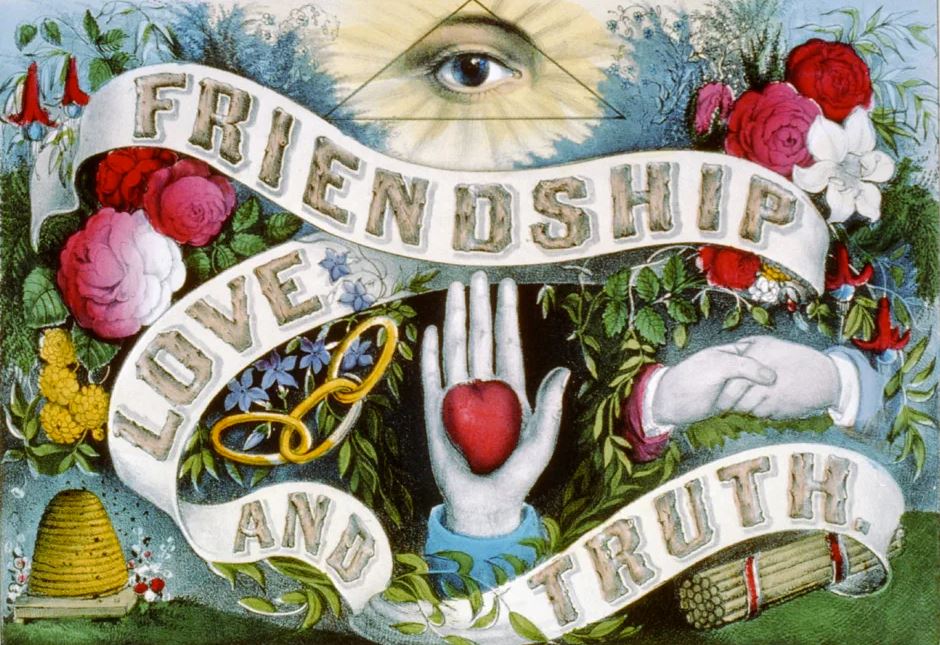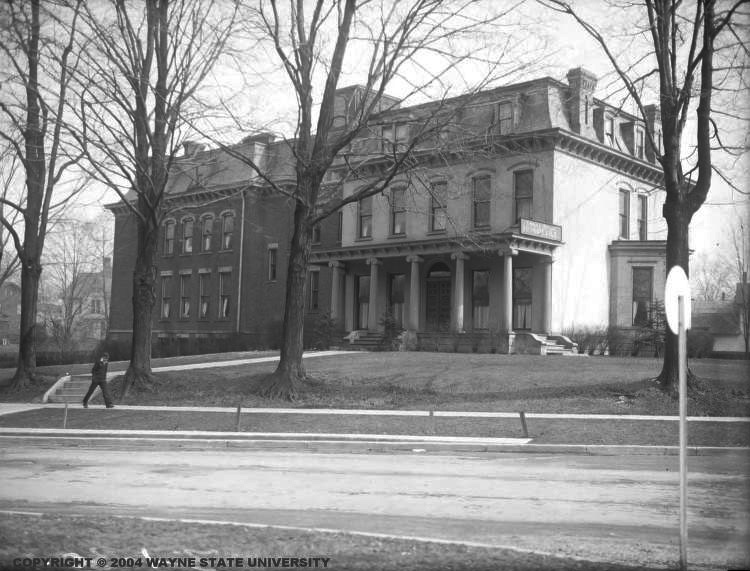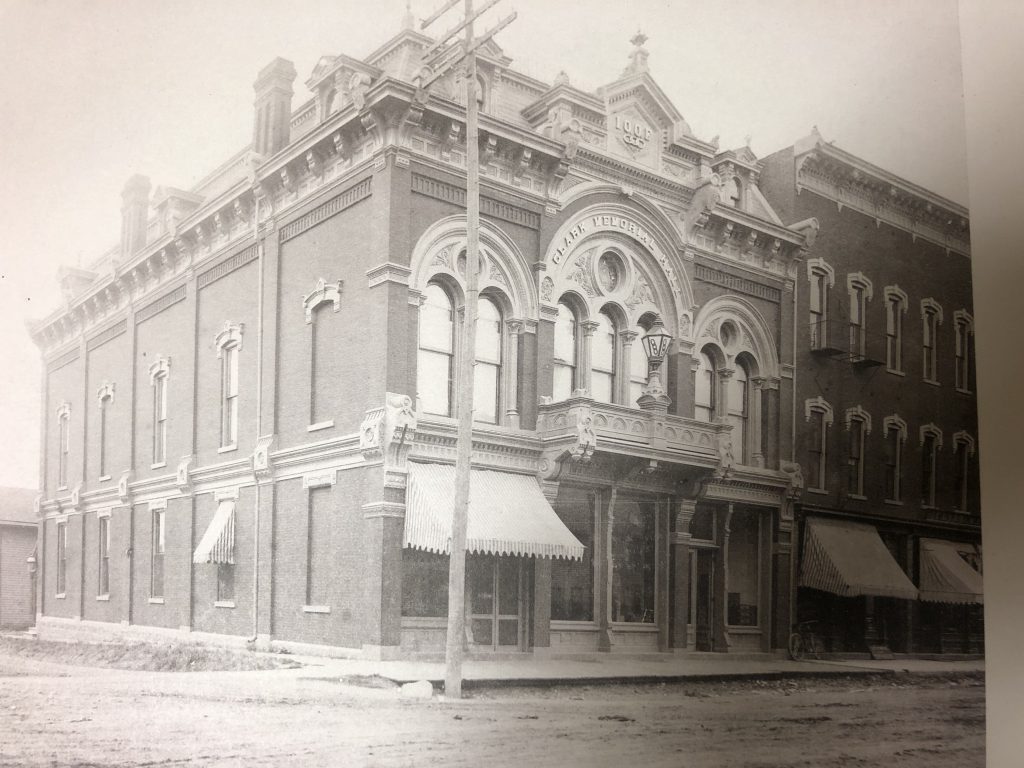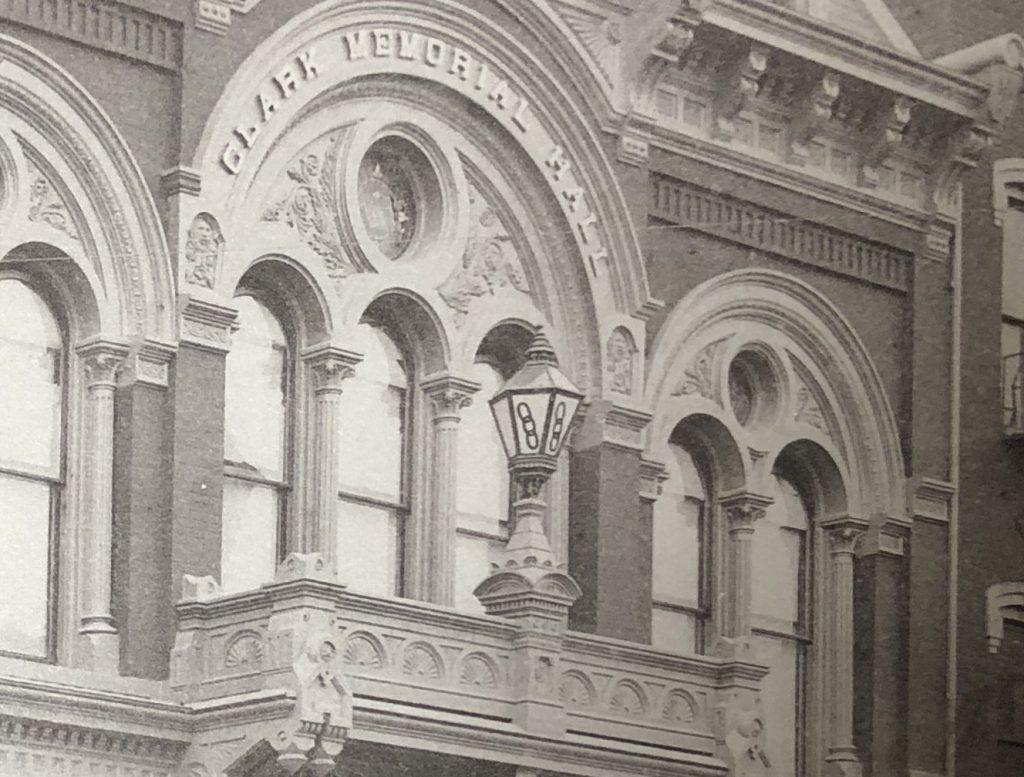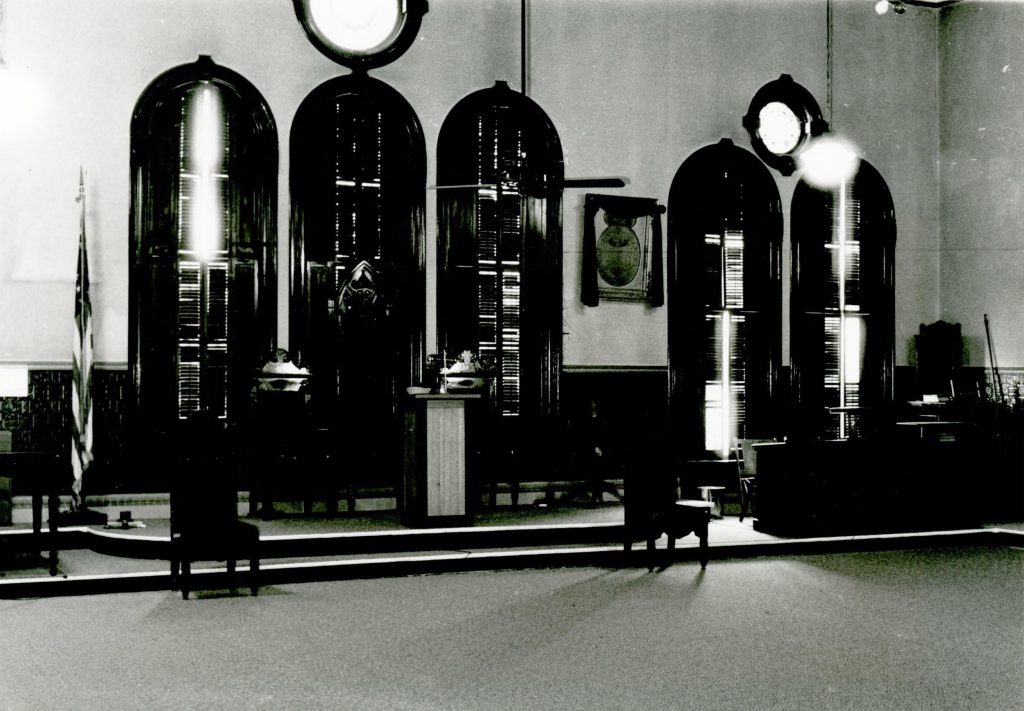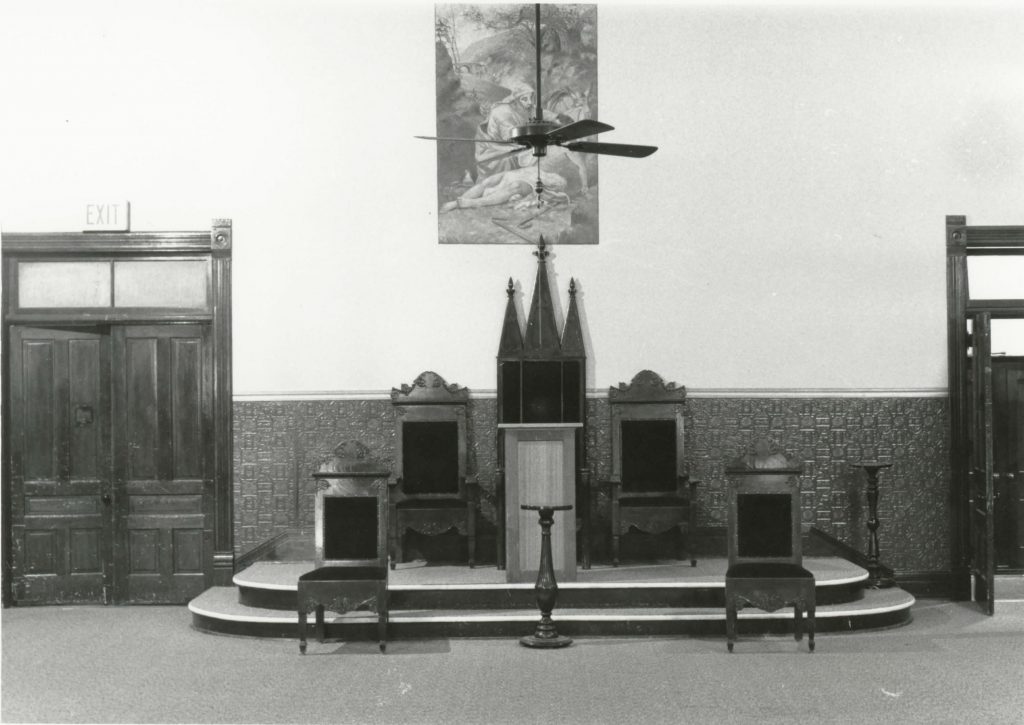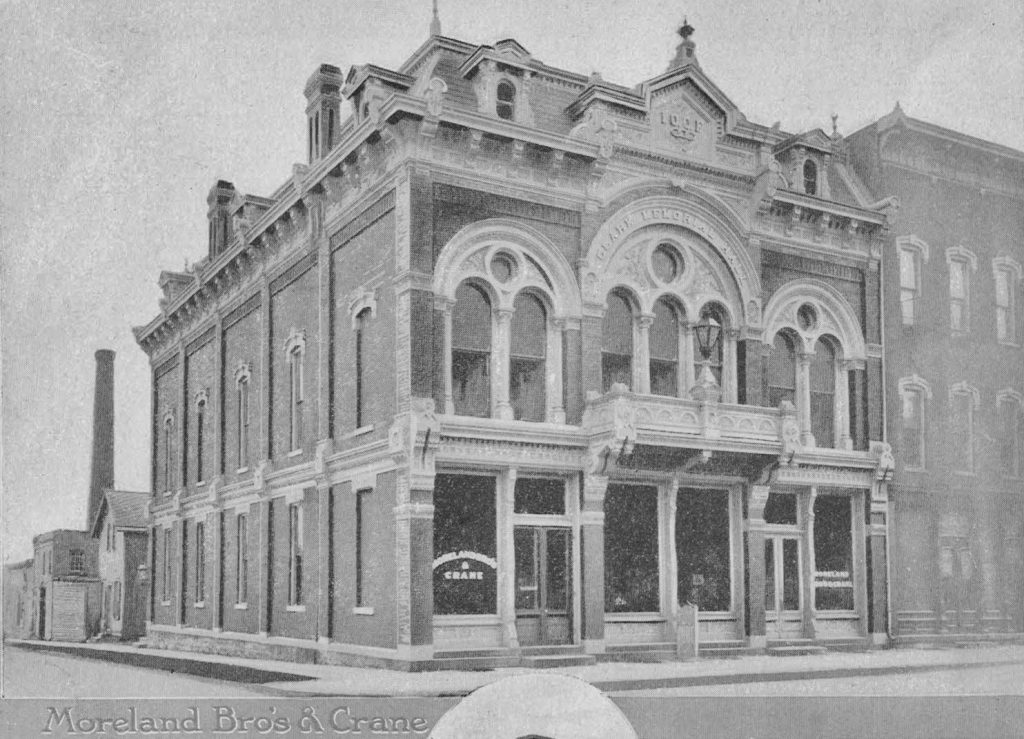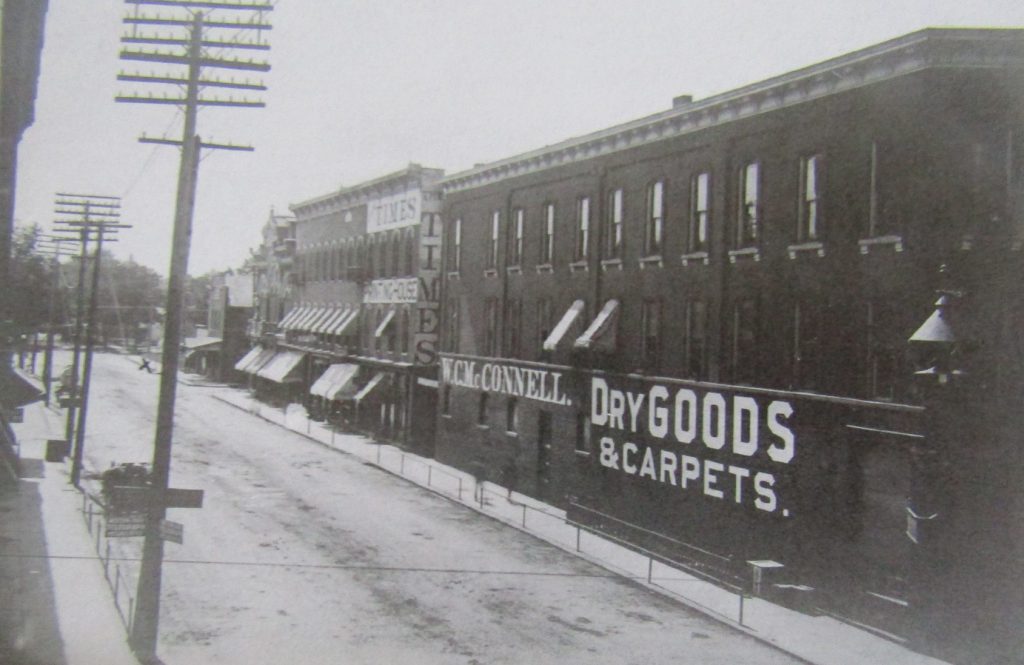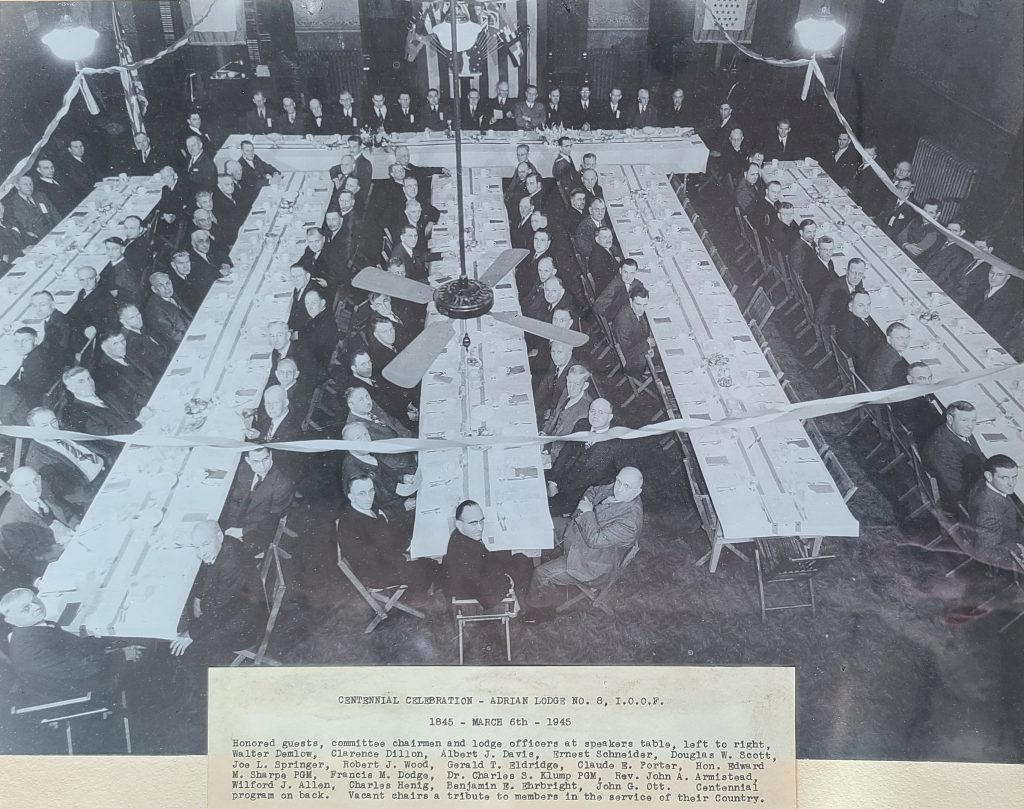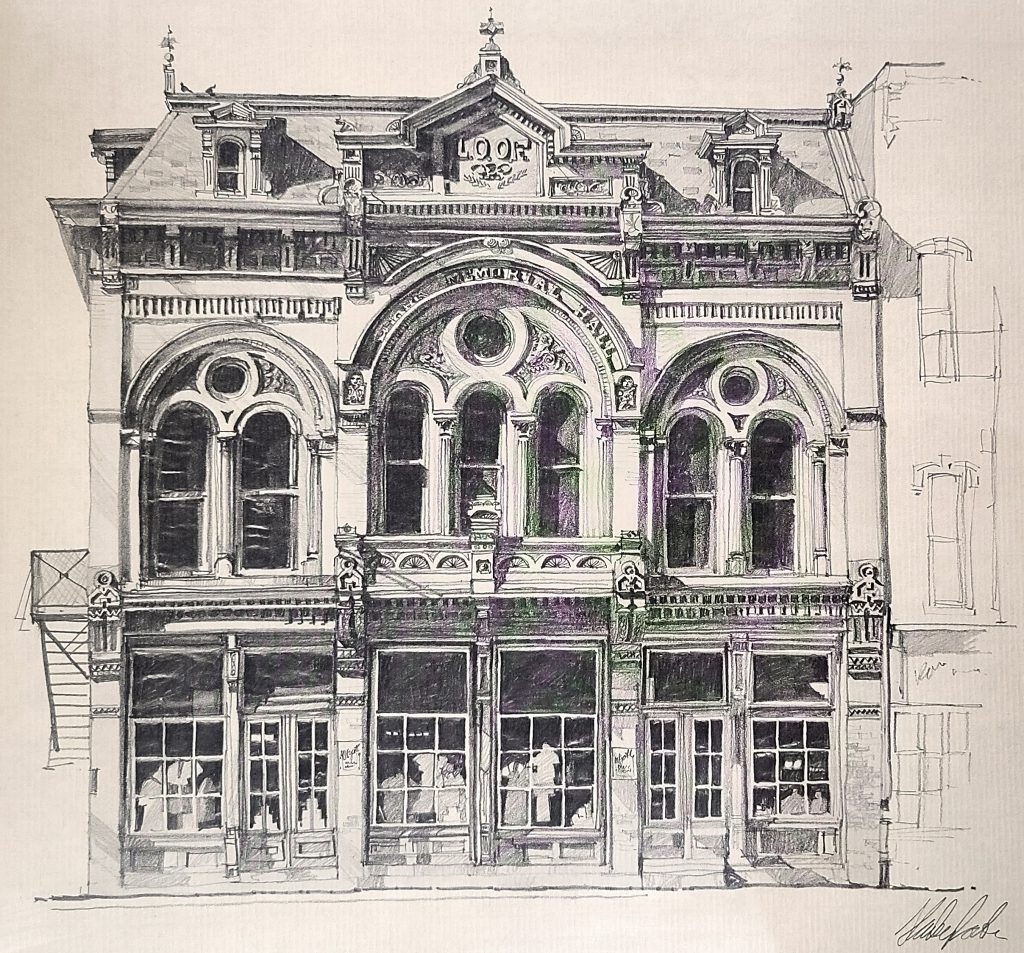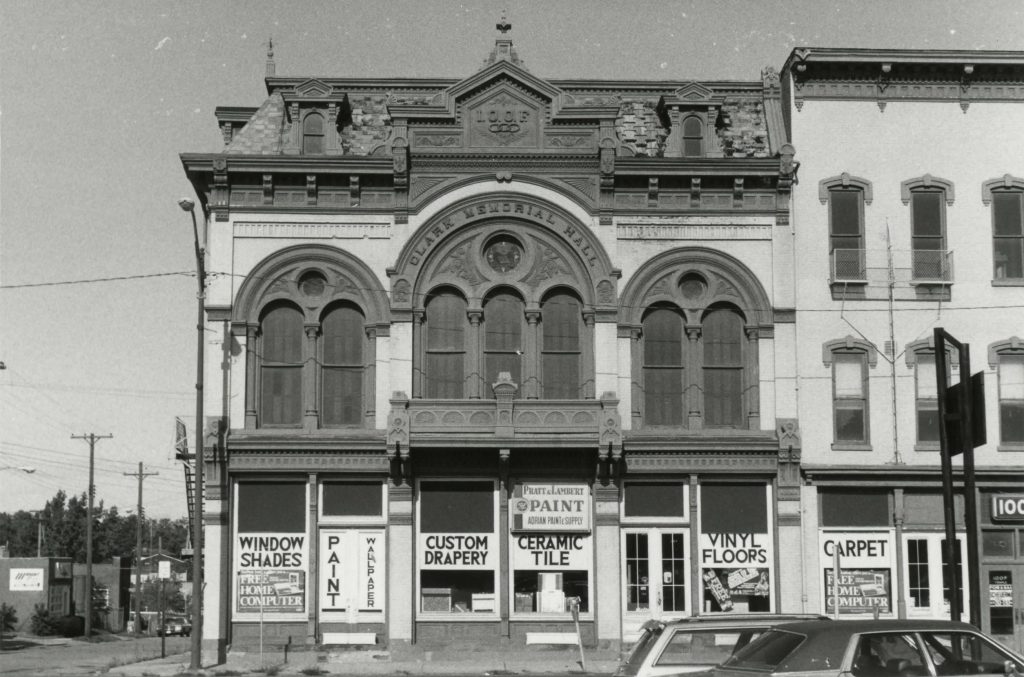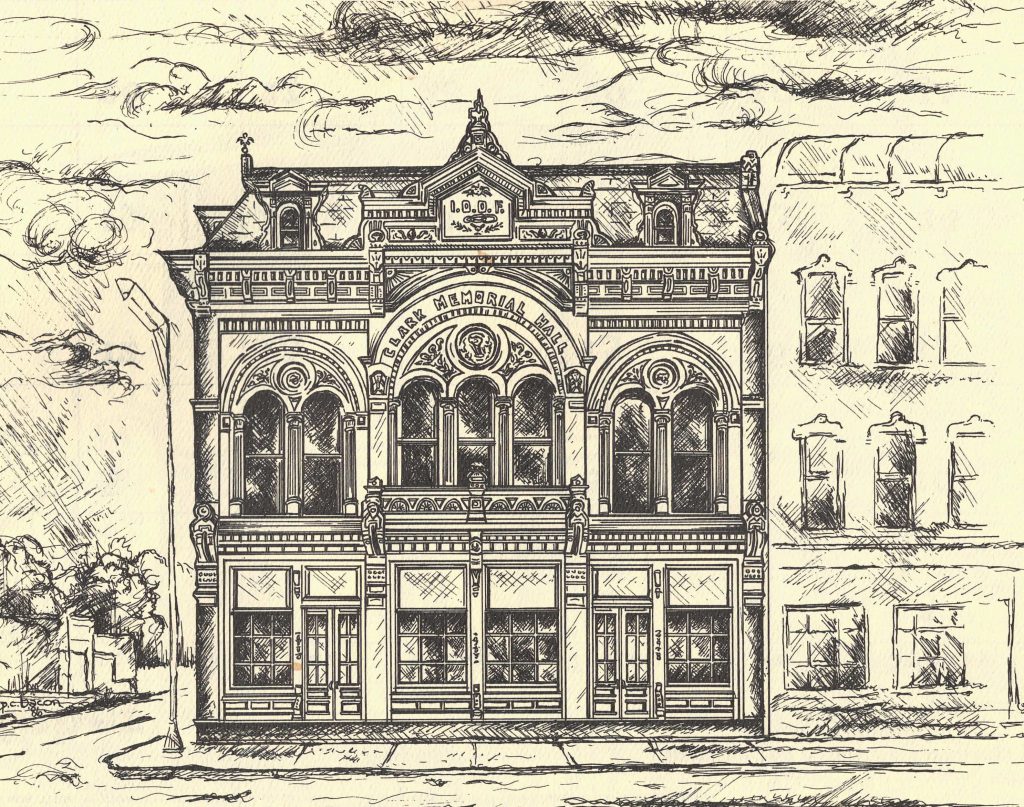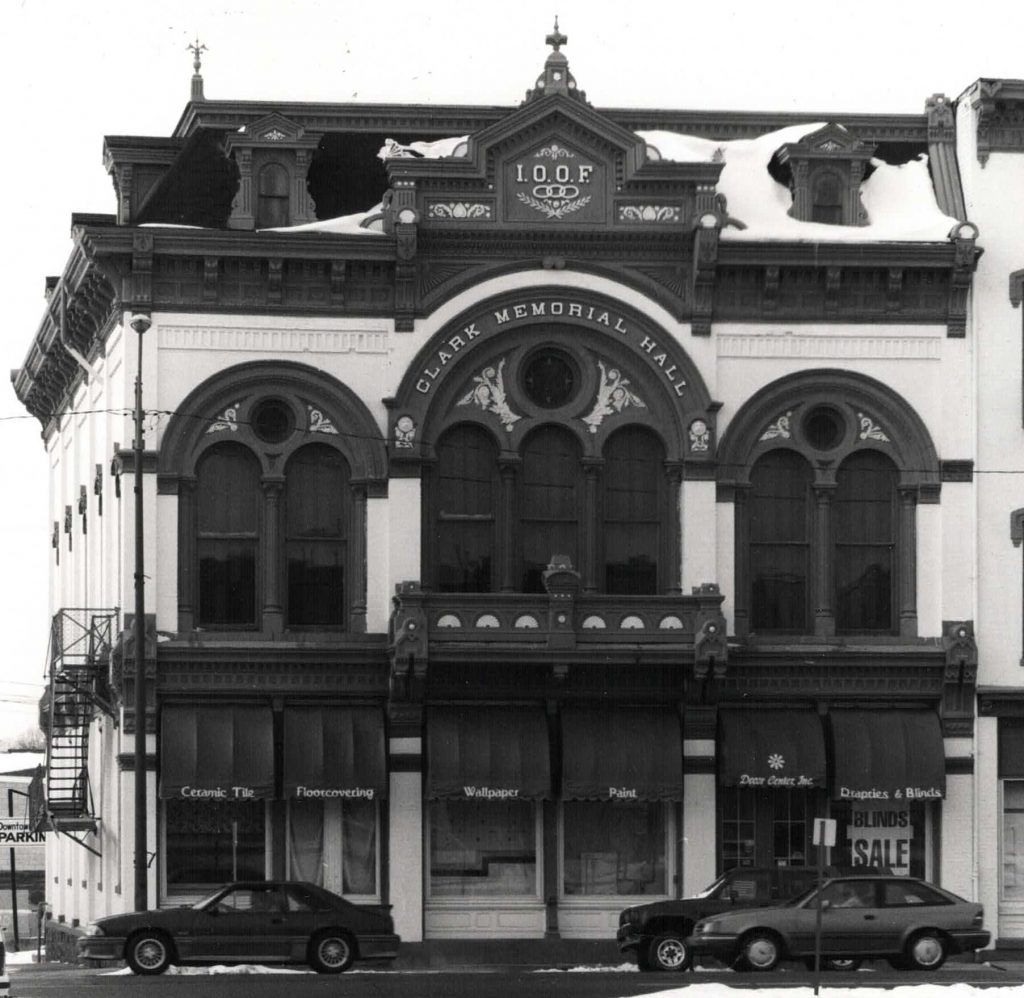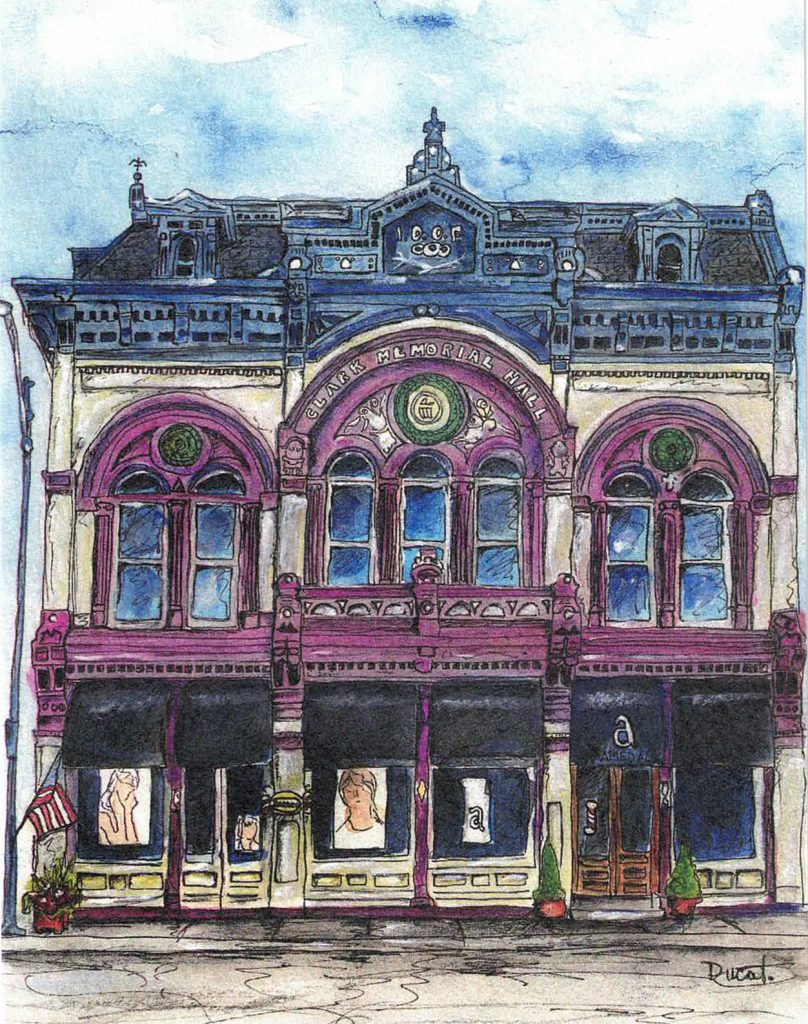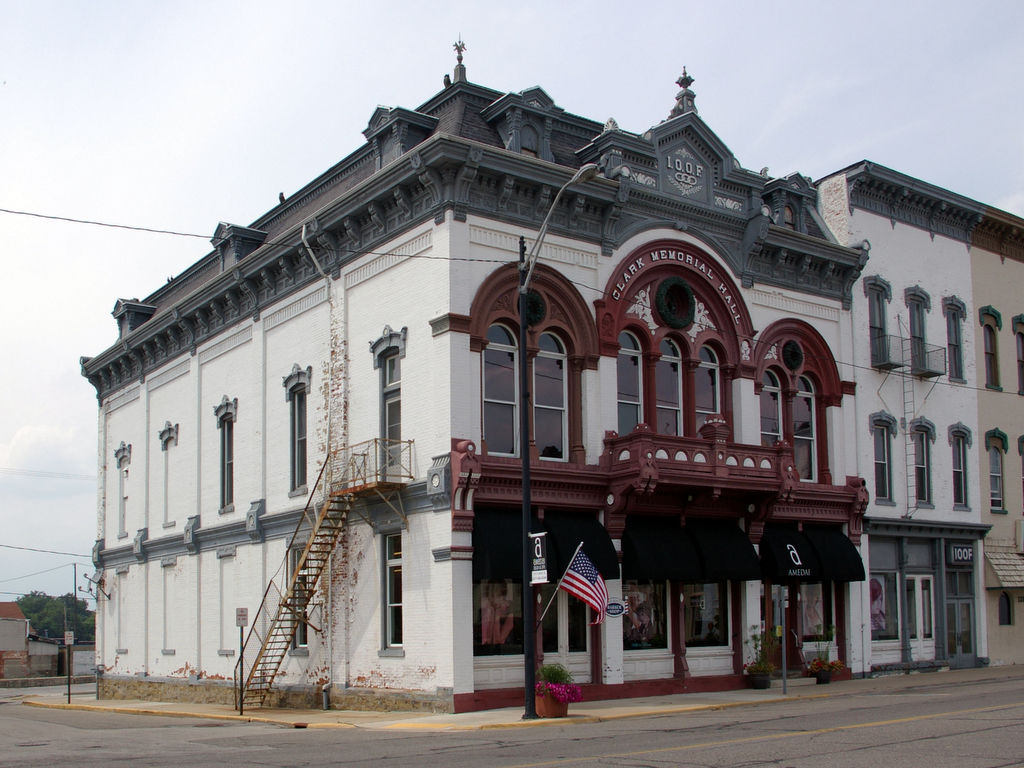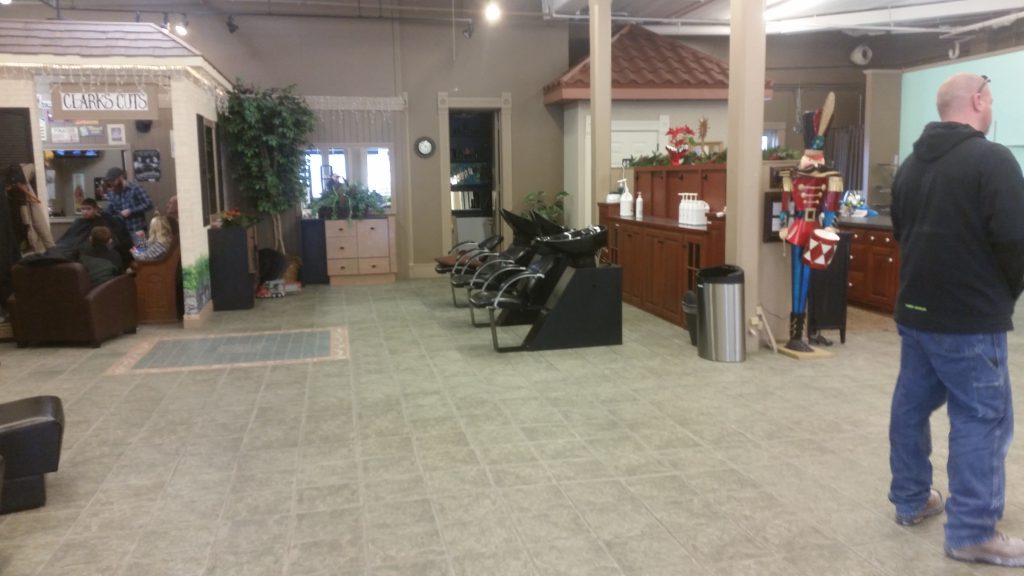
1836
Elihu L. Clark Moves to Adrian
Born in Walworth, NY on July 18, 1811, Elihu L. Clark became a clerk in a dry goods store in Palmyra, NY at the age of 19. He took over the business in 1832, and continued as owner/operator until 1835, when he sold out to a Mr. Jackson for $1,000 ($32,000 in today’s money). He immediately took the funds to New York where he used his entire net worth to purchase new inventory, and had it shipped to Adrian, Michigan. He opened a small store on Main Street, selling goods exclusively for cash.
1845
Adrian I.O.O.F. Established
Through a dispensation granted by Grand Master A.S. Kellog on March 6, 1845, a new Independent Order of Odd Fellows lodge was organized in Adrian–Adrian Lodge Number Eight. Monday night was designated as meeting night. During the first meeting of the Adrian Lodge, nine prominent Adrian citizens were intitiated into the Odd Fellows; among these was Elihu L. Clark.
1847
Elihu L. Clark Becomes a Banker
Through the late 1830s and 1840s, business was good. Elihu invested extra money in State scrip which he bought at a discount and generated large investment profits for himself when he later sold. In 1847, he sold his dry goods business to his brother, John R. Clark. From 1847 onward, Elihu L. Clark was in the business of lending money. He became an important financier of considerable fortune, supplying capital to local farmers and businesses.
1848
State Legislature
Elihu is elected to the State Legislature in 1848, and serves one term.
1868
Elihu L. Clark’s Wealth
Elihu L. Clark became a very wealthy man. His estate was estimated to be worth $750,000 by 1880 – which in today’s equivalent is $21 Million. He was said to be the wealthiest man in Lenawee county, and possibly all of southern Michigan. His wealth was nearly all generated from business conducted in and around Adrian. Clark lived in a grand Second Empire-style home that he built in the late 1860s for a cost of $5,500 ($204,000 current day equivalent) at the corner of Maumee and Locust streets, where the Adrian Post Office now stands. He donated much of his personal fortune to the welfare of his community. He donated $10,000 toward a project to find a location for the Detroit and Butler Railroad to pass through Adrian, Just before his death, Clark donated $5,000 to the new Adrian State Industrial Home for Girls, created by the Michigan Legislature in 1879.
1869
Bank President
When the Lenawee County Savings Bank was organized in December, 1869, Elihu was elected president of the institution and served in that capacity for many years until he finally resigned due to health concerns.
1880
Clark’s Death
Upon Clark’s death in 1880, he willed $10,000 to the Adrian IOOF Lodge #8 with instruction that at least half of it would be used to construct a new meeting hall. Clark’s daughter, Isabella Clark Cocker, honored his memory by remodeling her own home at 312 Dennis Street in the Second Empire style – the same as her father’s home. The IOOF would eventually follow suit, drawing up plans for a second empire style meeting hall to be built in his honor.
1888
Construction Starts
8 Years after Clark’s death, the Oddfellows had the land and capital sufficient to erect a meeting hall. During a meeting on April 30, 1888, the building committee was authorized to let contract to the lowest bidder for the hall’s construction. Beck and Vogt, a local firm, won the contract with a bid of $9,000. Stone was delivered to the site on June 1, 1888, and by August 11 the Adrian Daily Times and Expositor reported that the structure had “…the handsomest front in town.”
1888
Clark Memorial Hall is Completed
By late 1888, the structure neared completion. The entire first story was leased to Moreland Brothers and Crane, a tobacco and candy company. The interior fixtures of the store were installed by the Theime Mantel Company, and described in the local paper as follows: “The outfit, which is to be located on the south side of the building, will be made of finely carved antique oak. The front office will be next to the window and the back of it will be covered with antique oak and plate glass trimmings that will reach to the ceiling….The furniture will undoubtable surpass anything in this part of the state” On January 7, 1889 the IOOF held the first meeting in their new hall.
1888
Sanborn Fire Map
In 1888, the building was included in the printed October 1888 Sanborn Fire map of Adrian. The first floor is already marked “Tobac. Off” Next door to the north there are a variety of businesses occupying the Armory Block building, including an undertaker, a dining hall, and the Adrian Times newspaper. Find the full collection of 1888 Sanborn map images here: https://www.loc.gov/resource/g4114am.g039001888
1889
Facade Detail
The façade of Clark Memorial Hall is adorned with ornamental cast and galvanized metal features. Most of the prominent decorative elements are hollow, made from thin sheet metal. Symmetrical arched windows in 3 separate bays are topped with round stained glass windows. The main support pillars are cast iron, and manufactured by Adrian Brick & Tile Co. There is a cornerstone at the NE corner of the building that adorns the date “1887” but it is very well documented that the building was built in 1888. The mansard roof originally had stamped metal shingles. A large gas light sits atop the overhanging balcony that is affixed to the building.
1889
The Meeting Hall
The meeting hall on the second floor is 50′ x 45′ with 16′ ceilings without any support poles. Originally, there was a raised stage built beneath the front windows, with ceremonial furniture and adornments sitting atop. Varnished oak baseboards, window trim, and chairrails lined the room, and huge wooden shutters added to the secrecy of the meetings that occurred.
1889
Alarms and Peepholes
The rear of the meeting room had a raised second stage with more ceremonial furniture. Above this stage is a painting of “The Good Samaritan” by an unknown artist -a very common sight at most IOOF lodge halls. The doors leading back to the hall’s kitchen and lounge were fitted with peepholes and alarms. Members would enter up the stairs at the rear of the building and through the kitchen and lounge area behind the meeting room.
1907
Moreland Bros. & Crane
In this image, from 1907, the etched front windows bearing the “Moreland Bros. & Crane” logo is visible. Notice how 2 of the windows on the south side of the building have already been bricked in. We believe this was due to the extravagant fixtures installed in the Moreland Bros. Office right inside the front window. Unfortunately the antique oak fixtures at some point were removed from the building.
1910
Moreland Bros. Banner
This artist’s rendering of Clark Memorial Hall is printed on a Map of Adrian published in 1910 that I found hanging in a downtown Adrian restaurant (Sauce). You can see a large painted banner on the south face of the building.
1915
World War I
This photograph from ca. 1915 depicts World War I troops lined up on South Winter Street. Clark Memorial Hall is visible at the far left.
1920
Business Neighbors
Circa 1920 photograph looking down South Winter Street with Clark Memorial Hall visible. W. McConnell’s Dry goods store is operating in the building to the north of the Armory Block building. Although it can’t be seen in this photo, the Armory Block and the McConnell’s building had their 3rd floors attached together with a ~15 foot long “pedestrian bridge” floating 30 feet off the ground. If you look at the north side of the Armory Block building today, you can see where the opening has been bricked up.
1945
1845-1945 Centennial
Adrian’s IOOF Lodge #8 celebrated its centennial in 1945. The photo above shows the celebration feast. The empty chairs visible are set in honor of the men currently deployed in World War II.
1945
Photos of Members
This photo from 1945 has several prominent members during their Ceremonial Centennial Dinner
1959
Moreland Brothers & Crane Closes
ca. 1959, after 71 years of operation, Moreland Bros. & Crane close their doors at Clark Memorial Hall.
1965
A Notable Building
There are nearly as many drawings of Clark Memorial Hall as there were photographs taken over the years. In this drawing, part of a series that an artist drew of prominent downtown Adrian buildings, you can see what appears to be a retail store on the first floor. I’ve been told at one point a dress shop was open in Clark Memorial Hall. Although I’m unsure of the date, 1960-1972 is a period I’m assuming this was drawn (unverified)
1983
Mixed use of the first floor
From 1972-1998, the first floor was leased by Earl Solmonson, and he ran various retail home improvement related ventures and retail businesses. This picture was taken in 1983 when “Adrian Paint & Supply” was occupying the building.
1985
National Registry of Historic Places
in 1984, Clark Memorial Hall was nominated and in January, 1985 it was added to the National Register of Historic Places.
1985
IOOF Sells Clark Memorial Hall
Due to the membership dropping, Adrian IOOF Lodge #8 members made the decision to list the building for sale. After several months, eventually they agreed to sell the building to Earl Solmonson, their first floor business tenant. The IOOF then leased the second floor of the adjoined building to the north from Solmonson and continued to hold meetings, in a much smaller space. The large meeting hall was converted into additional retail space. Wallpaper books and carpet tile samples filled the space that the Odd Fellows had met in for 96 years.
1986
Historical Society Calendar
In 1986, the Lenawee County Historical Museum commissioned Pamela C. Bacon to draw 12 prominent Lenwee County buildings for a 1987 calendar.
1992
Slow deterioration
A photo from 1992 depicts the slowly deteriorating condition of Clark Memorial Hall. The dormer windows on the mansard roof have been replaced with plywood, and the finial is missing on the right. The building has been painted numerous times at this point.
2001
Clark Memorial Hall changes hands again
in 1998, Earl Solmonson retires and sells his business to his son, Ken Solmonson. In 2001, Ken purchases the building from his father.
2008
More Artwork
This drawing of Clark Memorial Hall was done in the late 2000s, after Amedai salon was opened (in 2007) by Ken Solmonson. It was used for the production of postcards. Of note is the wreaths that Mr. Solmonson put up around the 3 stained glass windows. These wreaths remained on the building until 2016 – nearly 10 years. I couldn’t wait to get them off!
2014
Mr. Solmonson is open to offers
In late 2014, the owner of Clark Memorial Hall, Ken Solmonson, walked into our small business (Maggard Razors) on Maiden Lane, inquiring if we might be interested in renting a portion of the first floor. We were on the verge of hiring our 6th employee, and had over 1500 products in the store – and operating in only 900SF. We were out of space! I told Ken that I wasn’t interested in renting only a portion of his first floor – because I needed more space than that to justify moving our store. I also told him that I’d be more interested in purchasing the building. This sparked a period of research and investigation, and I hired a lawyer to help out with the legalese. Eventually, we submitted a formal offer for the building, with a large number of contingencies. Photo credit: Jim Allen (July, 2014)
2015
Clark Memorial assesses for $175,000
Unfortunately, the building ended up assessing for $175,000 – far less than we had hoped, and we had to adjust our offer. The offer was accepted by Mr. Solmonson. As part of the agreement, we also purchased the salon business in a separate transaction. We immediately began the steps to close the salon. We gave all the stylists 1 month of free rent while they searched for places to relocate. Luckily all of the stylists managed to relocate within that month. We closed on Clark Memorial Hall on March 25, 2015.
2015
Moving in
in March 2015, Maggard Razors opened business operations in the first floor of Clark Memorial Hall

